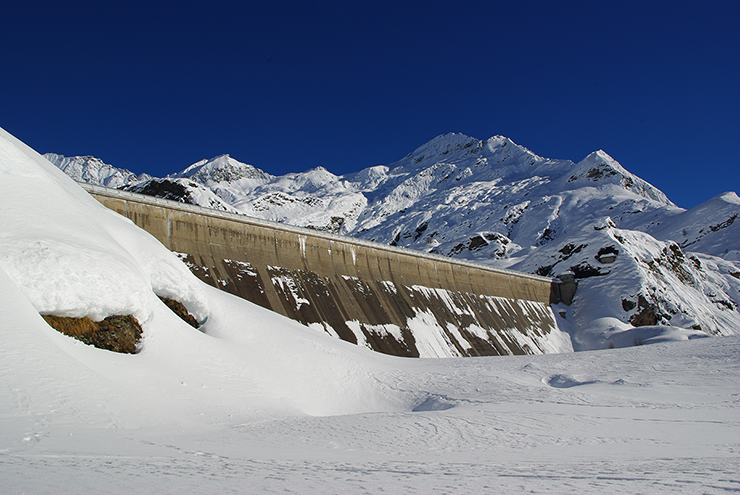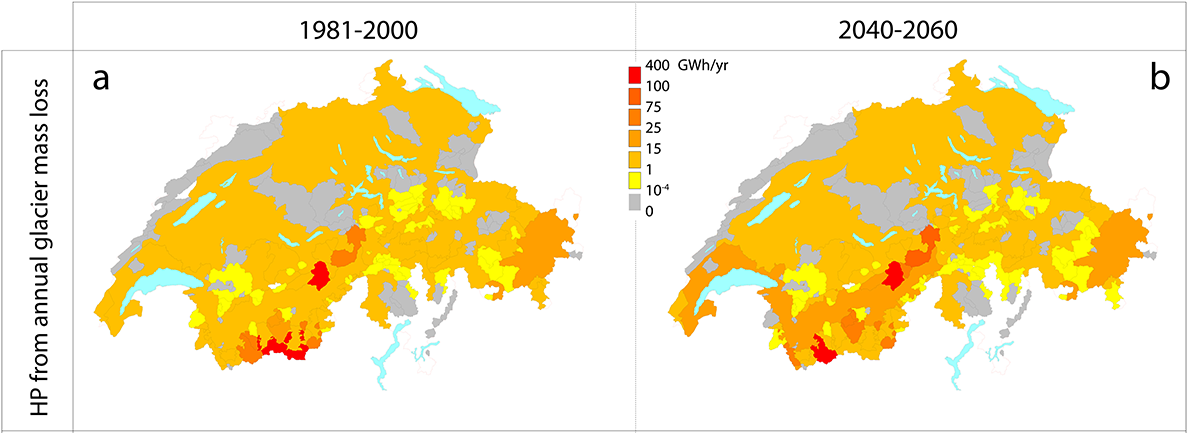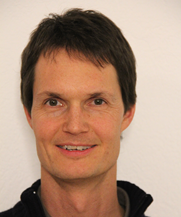Hydropower and glacier retreat: what is at stake?

November 2018 - by Bettina Schaefli, Pedro Manso, Matthias Huss, and Daniel Farinotti
Most of Swiss hydropower is produced from rivers fed and thereby influenced by glacier water. These glaciers are continuously losing mass, with the positive effect of ensuring high water yields during hot summer months. But how much of the Swiss hydropower production relies on water released by glacier mass loss, i.e. on water that cannot be replenished by precipitation in the coming decades? A team of SCCER-SoE researchers has answered this question in a recent scientific publication.
Especially during hot summers like the one in 2018, the Swiss glaciers are a precious source of water, in particular for hydropower production. But as we all know, glaciers are continuously retreating, meaning that they release water that was accumulated years to centuries ago, and that cannot be replenished by precipitation in the near future. Therefore, an interdisciplinary SCCER-SoE research team including glaciologists, hydrologists, and hydraulic engineers decided to quantify the following aspects: How strongly relies Swiss hydropower production on waters released by glaciers? How big are the local variations? How might hydropower production evolve in the future? To answer these questions, we needed to compile the most recent data sets on Swiss water resources and hydropower infrastructure, and on the glacier mass evolution in the past and in the future.
Less hydropower production because of glacier retreat by the end of this century
According to our estimates, since 1980 3.0 % to 4.0 % of Swiss hydropower production was directly provided by losses in glacier volume. This corresponds to between 1.0 and 1.4 TWh per year, or the annual electricity consumption of roughly 230,000 Swiss households. Glacier mass loss will continue to feed the Swiss hydropower plants in the future, but the production directly related to this contribution will drop to around 0.4 TWh per year by 2070-2090. In other words, the calculations anticipate a reduction in hydropower production of up to 1 TWh per year resulting from the fact that the glaciers will not continue to release such large amounts of waters as they do at the moment.
However, there are strong regional differences (Figure 1). In the Rhone river catchment, with its large valley glaciers, between 6.5 % and 8.5 % of the annual hydropower production stemmed from glacier mass loss in the recent past. This share is likely to only marginally decrease between 2040 and 2060, but will drop by half from 2070 to 2090.
Glacier meltwater: more important for Swiss hydropower production than one might think
Knowing that glaciers cover only around 2.5 % of the Swiss territory, the significance of glacier mass depletion for Swiss-wide hydropower production might be surprising at first glance. There are two reasons for its importance: First, the high electricity coefficients (that is the amount of electricity that can be produced with a given amount of water) of hydropower schemes exploiting glacier water. Second, the fact that glacier water is turbined multiple times along its path between the glaciers and the Country borders. In the Rhone catchment, for example, some waters are used up to nine times before leaving Switzerland, whilst some hydropower schemes in the Valais and the Berner Oberland can produce more than 3 kWh per m3 of water.
These Swiss-wide analysis highlights that glacier mass depletion should receive more attention in the context of the Energy Strategy 2050. The projected production reduction of 1 TWh per year from 2070 to 2090, for example, is comparable to the expected production decrease of 1.4 TWh per year due to the implementation of the Swiss water protection act. It is also of the same order of magnitude as the expected increase of hydropower production from additional small hydropower projects.
Future hydropower production depends on the producers
But what are the implications for hydropower production during future hot summers? It is important to point out that our analysis focused on annual hydropower production and its relation to glacier mass loss. The actual future hydropower production during hot summers will depend on how the hydropower producers adapt their production to the evolving water offer in the coming decades.
Authors

Bettina Schaefli worked as a senior scientist for SCCER-SoE between 2014 and 2015. Since 2016, she holds an SNF professorship for hydrology at University of Lausanne.
Pedro Manso is a civil engineer with 20 years of experience in the Water and Electricity. He is the coordinator of task 2.2 Infrastructure adaptation.
Matthias Huss is senior lecturer at the ETH Zurich and the University of Fribourg, and leader of the Swiss Glacier Monitoring Network (GLAMOS). His work is focussed on the past, present and future changes in glaciers.
Daniel Farinotti, VAW - ETH Zurich / WSL Birmensdorf. engaged in the SCCER-SoE since 2014, where he focuses on the role of glaciers for hydropower production.
Learn more
Scientific article published in the journal "Renewable Energy" (pre-print).
Swiss Glacier Monitoring Network: www.glamos.ch
Related recent publications by the co-authors of this study:
- Schaefli, B.: Projecting hydropower production under future climates: a guide for decision-makers and modelers to interpret and design climate change impact assessments, WIREs Water, 2, 271–289, 10.1002/wat2.1083, 2015.
- Farinotti, D., Pistocchi, A., and Huss, M. (2016). From dwindling glaciers to headwater lakes: Can dams replace glaciers in the European Alps? Environmental Research Letters, 11, 054022.
- Huss, M., and Hock, R. (2018). Global-scale hydrological response to future glacier mass loss. Nature Climate Change, 8, 135-140, doi:10.1038/s41558-017-0049-x.




